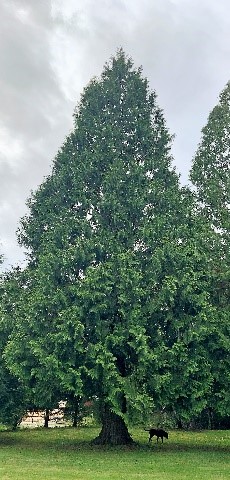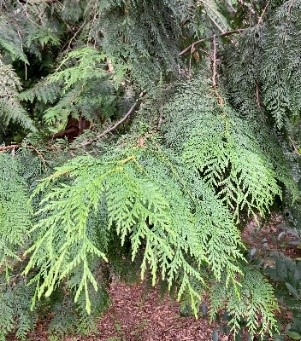Western Red Cedar (Thuja plicata)
Western red cedar has an extensive history of use by Native Americans of coastal Oregon to southeast Alaska. Some northwest coast tribes refer to themselves as “people of the red cedar” because of their extensive dependence on the tree for basic materials. The wood has been used for constructing housing and totem poles, and crafted into many objects, including masks, utensils, boxes, boards, instruments, canoes, vessels, houses, and ceremonial objects.
Red cedar branches are very flexible and have good tensile strength. They were stripped and used as strong cords for fishing line, rope cores, twine, and other purposes where bark cord was not strong enough or might fray.
At the right time of year, the bark of Western red cedars is easily removed from live trees in long strips. It would be harvested for use in making mats, rope and cordage, basketry, rain hats, clothing, and other soft goods. The harvesting of bark must be done with care because, if the tree is completely stripped, it will die. To prevent this, the harvester usually only harvests from trees which have not been stripped before. After harvesting the tree is not used for bark again, although it may later be felled for wood. The harvested bark is folded and carried in backpacks. It can be stored for quite some time as mold does not grow on it, and is moistened before unfolding and working. It is then split lengthwise into the required width and woven or twisted into shape.

A beautiful Western Red Cedar 
A Western Red Cedar branch up close
